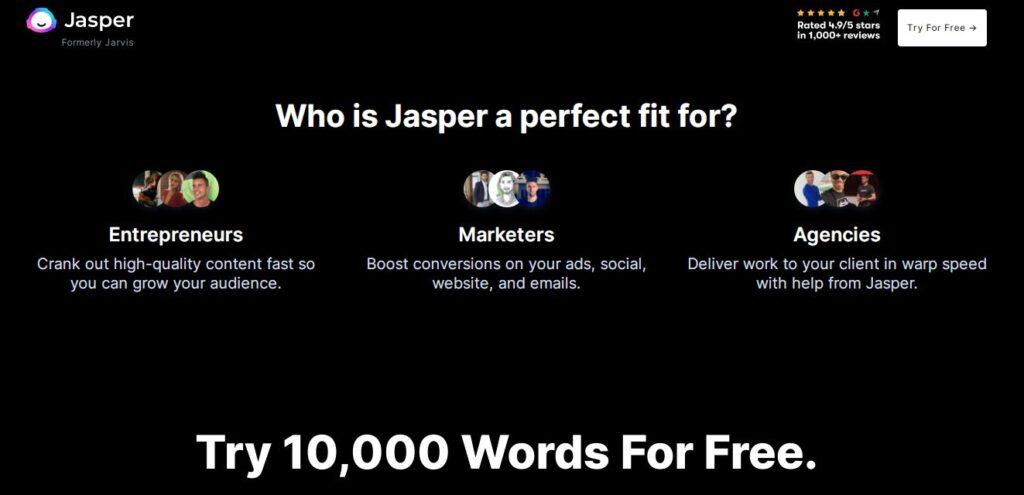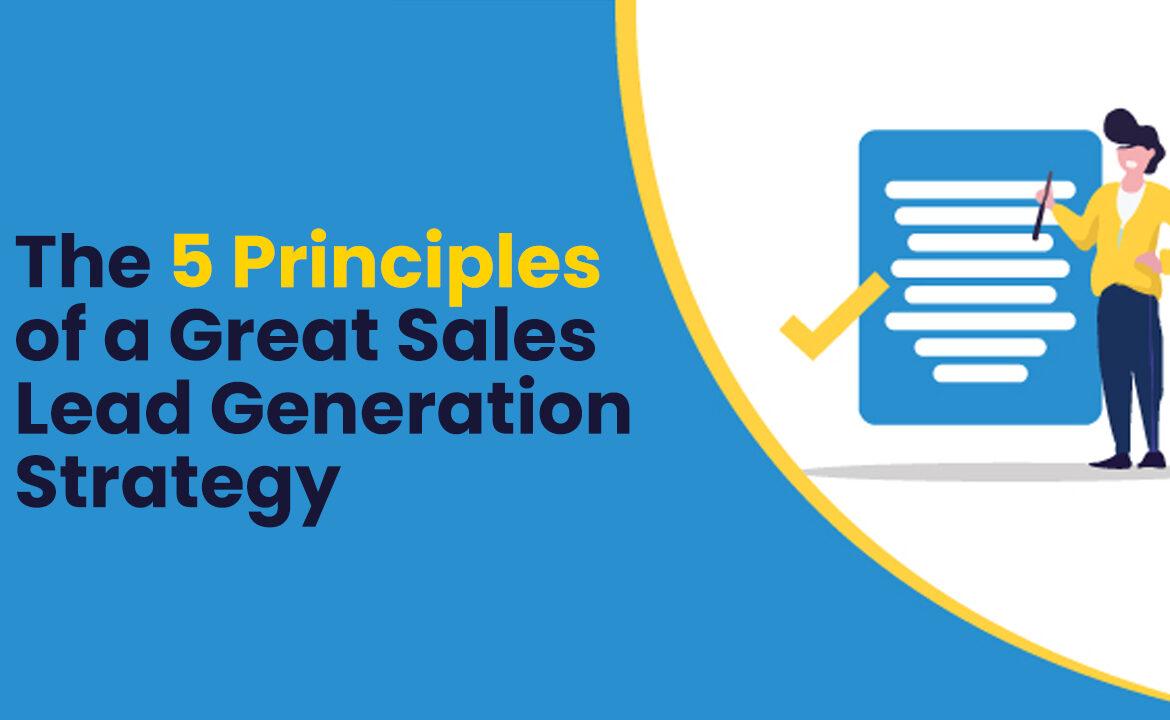The 5 Principles of a Great Sales Lead Generation Strategy
Generating sales leads is essential for any business. It can be tough, though, to come up with a strategy that works well and produces consistent results. In this blog post, we will discuss the 5 principles of a great sales lead generation strategy. If you follow these principles, you will be well on your way to generating more leads and boosting your sales!

Your audience no longer desires your attention; they want you to earn it.
This means that across the market, lead generation strategy plans must be updated to better meet the demands of target consumers.
The first step in this progress is to produce compelling material, and the second is to utilize it to convert visitors into leads. Of course, this is easier said than done.
Jasper.ai is a great tool for sales lead generation. It helps you identify your target market and create content that is tailored to their needs. Jasper.ai also provides social media analytics so you can track your results and improve your strategy. Try Jasper.ai today and see how it can help you generate more leads and boost your sales!

Also, read How to Force Google To Reindex Your Site: The Ultimate Guide, A comprehensive guide to Custodial and Non-custodial NFT marketplace 2022, The Most Exciting NFT Projects For 2022
What is a lead?
A lead is an individual who expresses an interest in a company’s product or service, whether it be through email, a website, social media, or some other method.
Instead of getting a random cold call from someone who purchased their contact information, Leads generally hear back from a firm or organization after establishing communication (by submitting personal information for an offer, trial, or subscription)… Instead of receiving a random cold call afterwards.
Let’s assume you conduct an online survey to learn more about how to maintain your car. A day or two later, you receive an email from the automobile manufacturer that created the survey, informing you of their services.

This approach would be far less intrusive than if they just called you out of the blue and had no idea whether or not you cared about car maintenance, right? This is what it feels like to be a leader.
From a commercial standpoint, the data collected from your survey answers help them personalize that first contact with you to address your current issues — rather than calling leads who aren’t interested in automobile services.
Different Types of Leads
- Marketing Qualified Lead (MQL)
Qualified leads are contacts who have interacted with your marketing team but are yet to be contacted by a sales representative. A contact that fills out a landing page form for an offer is an example of an MQL (as in our lead generation process scenario below).
- Sales Qualified Lead (SQL)
Leads that are not sales-ready are contacts who have completed activities that demonstrate their desire to become paying customers. A contact who fills out a form to ask a question about your product or service is an example of SQL.
- Product Qualified Lead (PQL)
Qualified leads are persons who have used your product and engaged in actions that indicate an interest in becoming a paying client. PQLs are often found in businesses that provide a product trial or a free or limited edition of their product (like HubSpot!).
This is where your sales team comes into play because many opt-in conversion scenarios exist for companies that offer a product trial or free or limited version of their service (such as HubSpot!) with options to upgrade.
- Service Qualified Lead
Service leads are people or businesses who have expressed an interest in becoming a paying client to your service team.
Why do you need lead generation?
When a stranger shows interest in your company after approaching you, the transition from stranger to the client is far more natural.
The second stage of the inbound marketing technique is known as lead generation. You’ve acquired an audience and are ready to convert those visitors into leads for your sales team (in this case, sales-qualified leads) after you’ve completed the first stage.
Also, read Starting a Blog Without a Website: The Pros and Cons, The 16 Essential Elements Of Great Copy That Call To Action, How to Write a Good Blog Post: The Ultimate Guide
What is Sales Lead Generation Strategy?
A lead generation strategy is a plan of action that you put in place in order to generate leads for your business. This could include things like creating content, running ads, or reaching out to potential customers. There are a lot of different ways to generate leads, and the best strategy for your business will depend on your target audience and what type of leads you are looking to generate.

The most important part of a lead generation strategy is to ensure that your leads are high quality and relevant to your business. There is no point in generating a bunch of leads if they are not going to convert into sales. That’s why it’s so important to have a well-thought-out plan in place before you start generating leads.
Now that we’ve covered what a lead generation strategy is, let’s talk about the five principles of a great one.
5 Principles of a Great Sales Lead Generation Strategy
Principle #1
A great sales lead generation strategy must be laser-focused. You can’t be all things to all people, so it’s important to know your target market and what they are looking for.
Once you have identified your target market, you can create a strategy that is tailored to them and their needs. This will help you attract more qualified leads, which will result in more sales.
Principle #2
Your lead generation strategy should be built on a solid foundation of content marketing. Content is what will attract people to your website or blog in the first place.
If you provide helpful, informative, and engaging content, people will keep coming back for more. This will give you more opportunities to generate leads and make sales.
Principle #3
Make sure you are using the power of social media to your advantage. Social media is a great way to reach a large number of people in a short amount of time. If you use it effectively, you can quickly generate leads and boost your sales.
Principle #4
Your website should be designed with lead generation in mind. Make sure your website is easy to navigate and includes calls-to-action that encourage visitors to sign up for your email list or contact you for more information.
If you make it easy for people to take the next step, they will be more likely to do so.
Principle #5
Finally, don’t forget to track your results. Keep an eye on your website traffic and conversion rates. This will help you determine what is working and what needs to be improved. By tracking your results, you can fine-tune your lead generation strategy and make sure it is as effective as possible.
By following these principles, you can create a sales lead generation strategy that is tailored to your business and produces consistent results. Implement these tips today and start generating more leads tomorrow!
A great sales lead generation strategy is one that is laser-focused on your target market, built on a foundation of quality content marketing, and uses social media to its fullest potential.
Your website should be designed with lead generation in mind and you should track your results so you can continually improve your strategy. By following these five principles, you can create a strategy that will help you generate more leads and increase your sales.
Also, read What Exactly is a Metaverse and its Opportunities, How to Make Use of Jasper AI Content Improver?, and How do I write unique blog posts?

